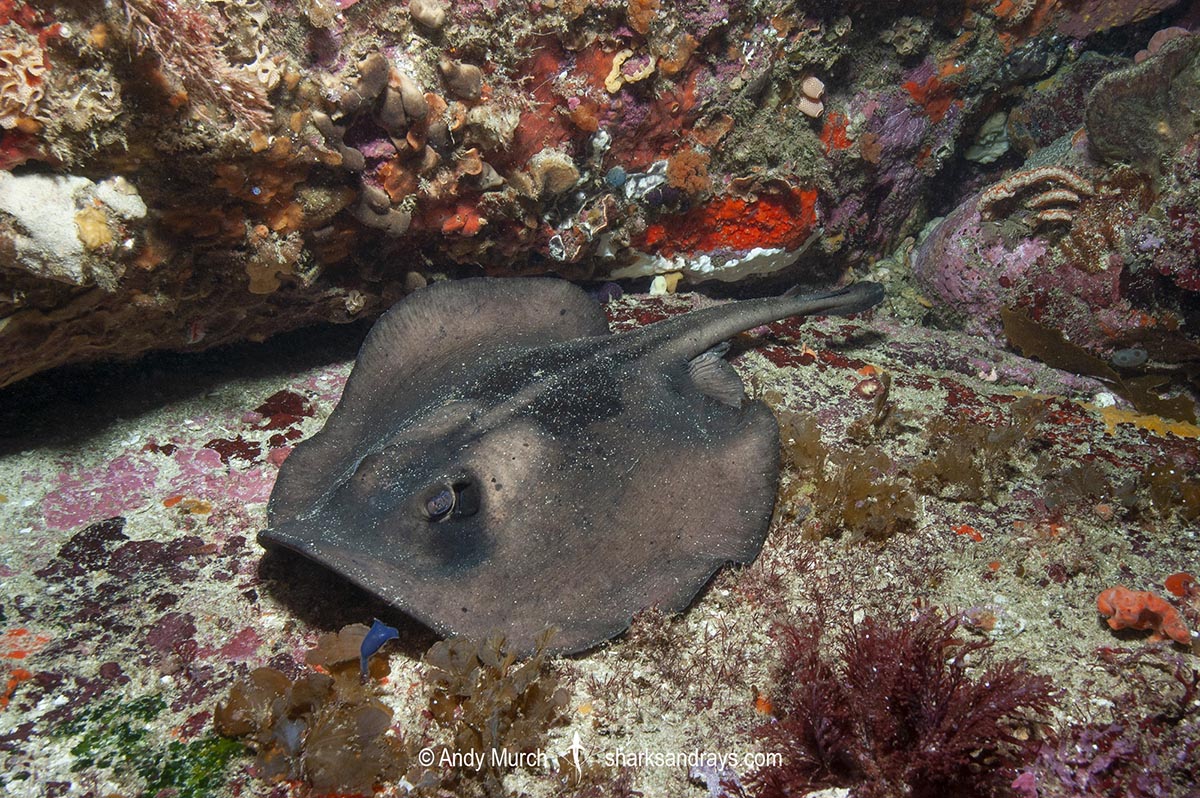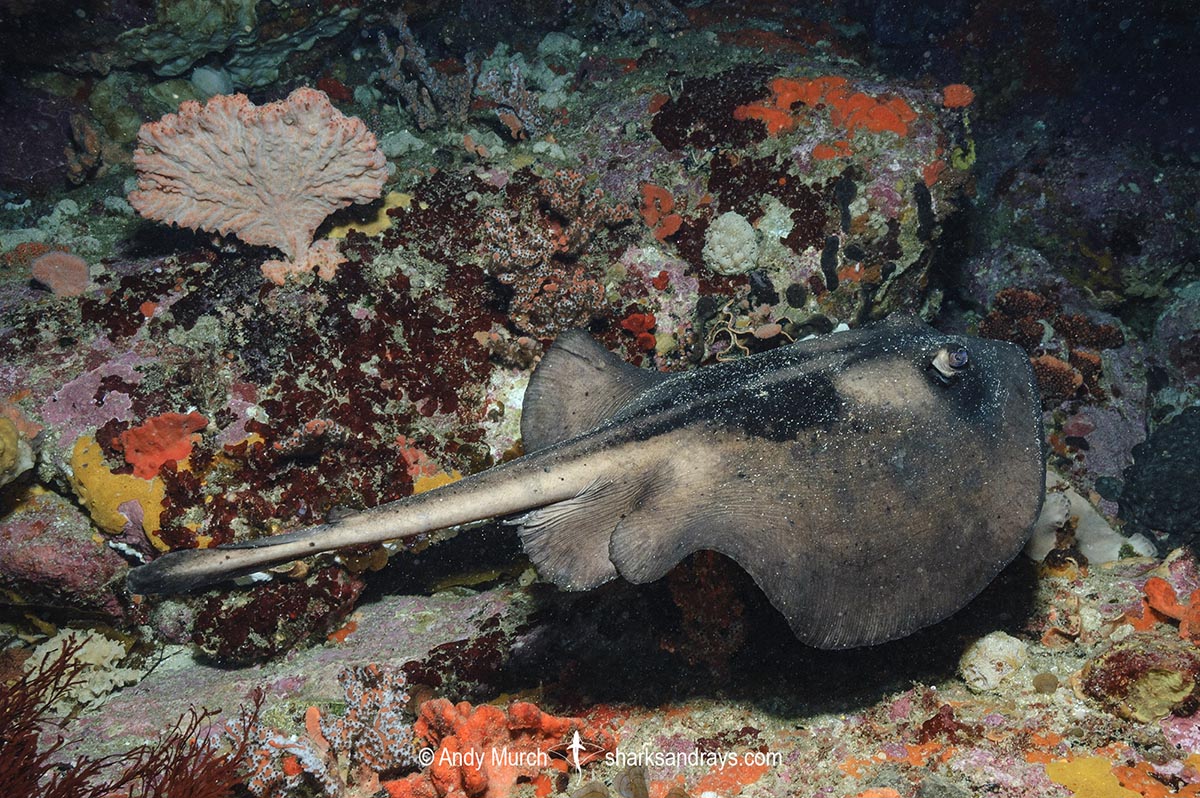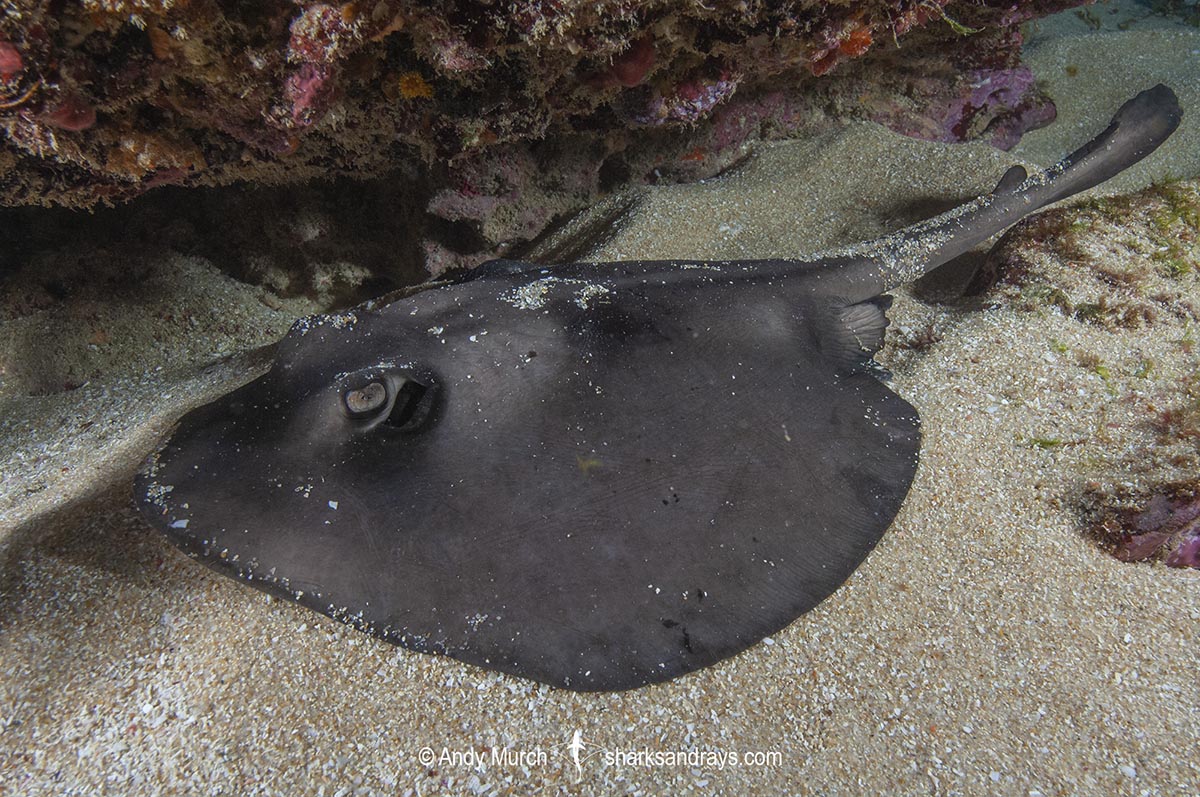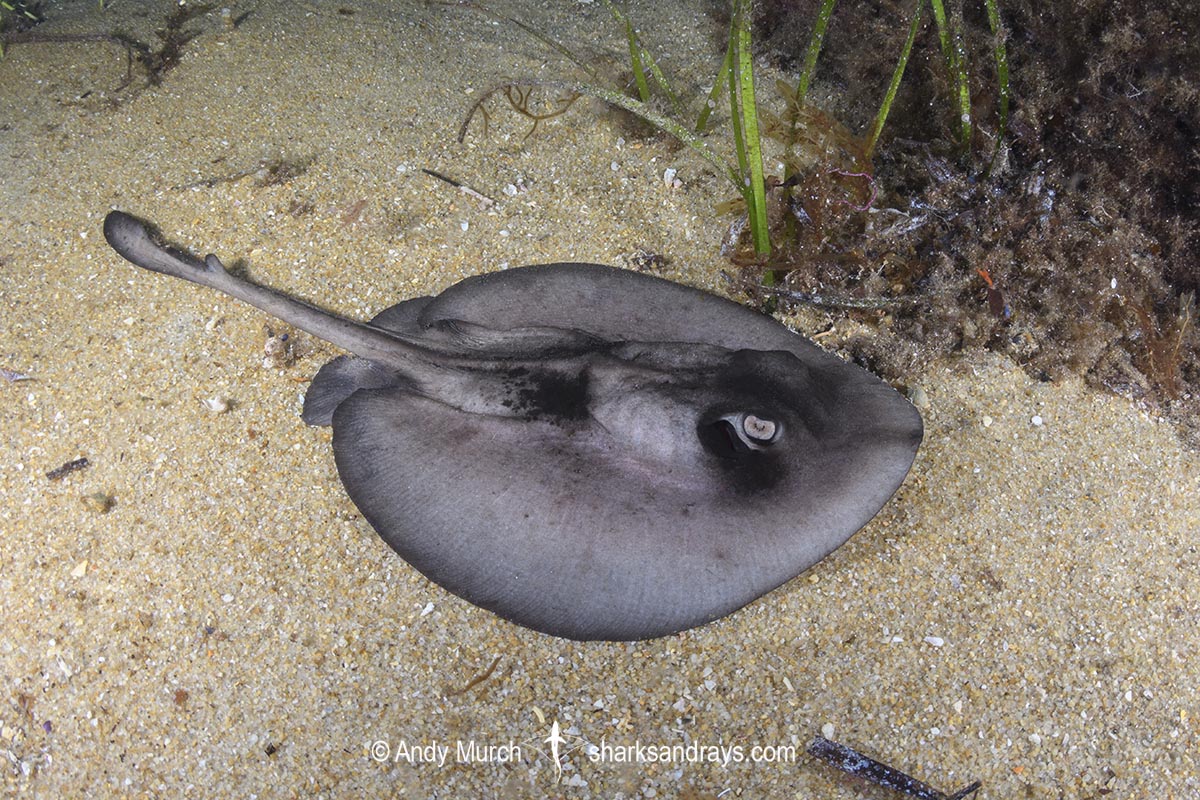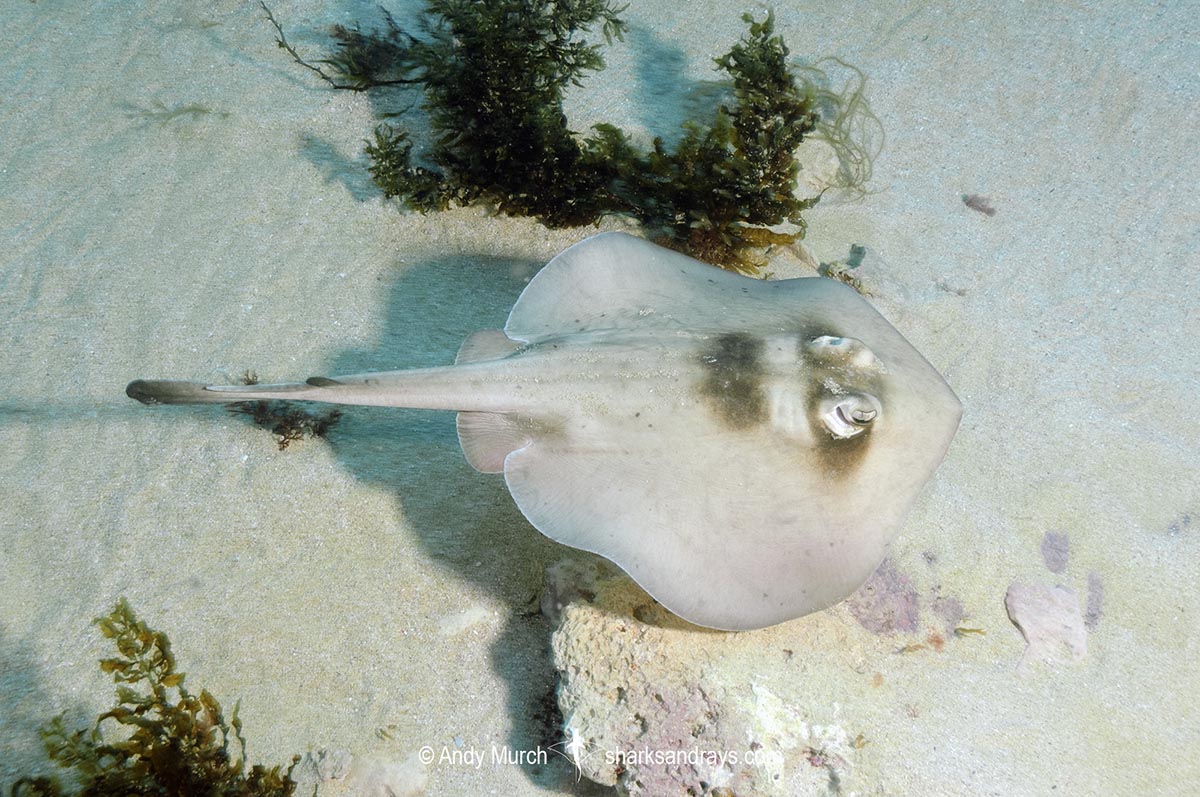Common names
Striped stingaree.
Binomial
Trygonoptera ovalis.
Synonyms
None.
Identification
A large stingaree with a sub-oval disc that is slightly longer than wide. Snout rounded, without an extended tip. Anterior margins of disc convex, apices broadly rounded. Disc completely smooth.
Eyes fairly small; orbit length 17-22% of snout length. Spiracle origin below mid-eye. Mouth small. Four oral papillae on mouth floor. Nasal curtain skirt shaped, not extended into a distinct lobe, posterior margin heavily fringed. Distinct, fleshy lateral-posterior lobe present on each nostril.
Tail 0.75-1 x disc length, oval in cross-section, depressed anteriorly. Small dorsal fin present anterior to long caudal sting. Caudal fin relatively large and deep.
Colour
Dorsum grey or brownish-grey with a dusky or black mask across eyes, and paired large black blotches on each side of mid-line at mid-back, narrowing to form black or dusky parallel stripes, often extending onto tail. Disc margin sometimes black or dusky. Ventrum mostly white or yellowish. Caudal fin dusky or black.
Size
Maximum total length 61cm. Disc width at birth unknown.
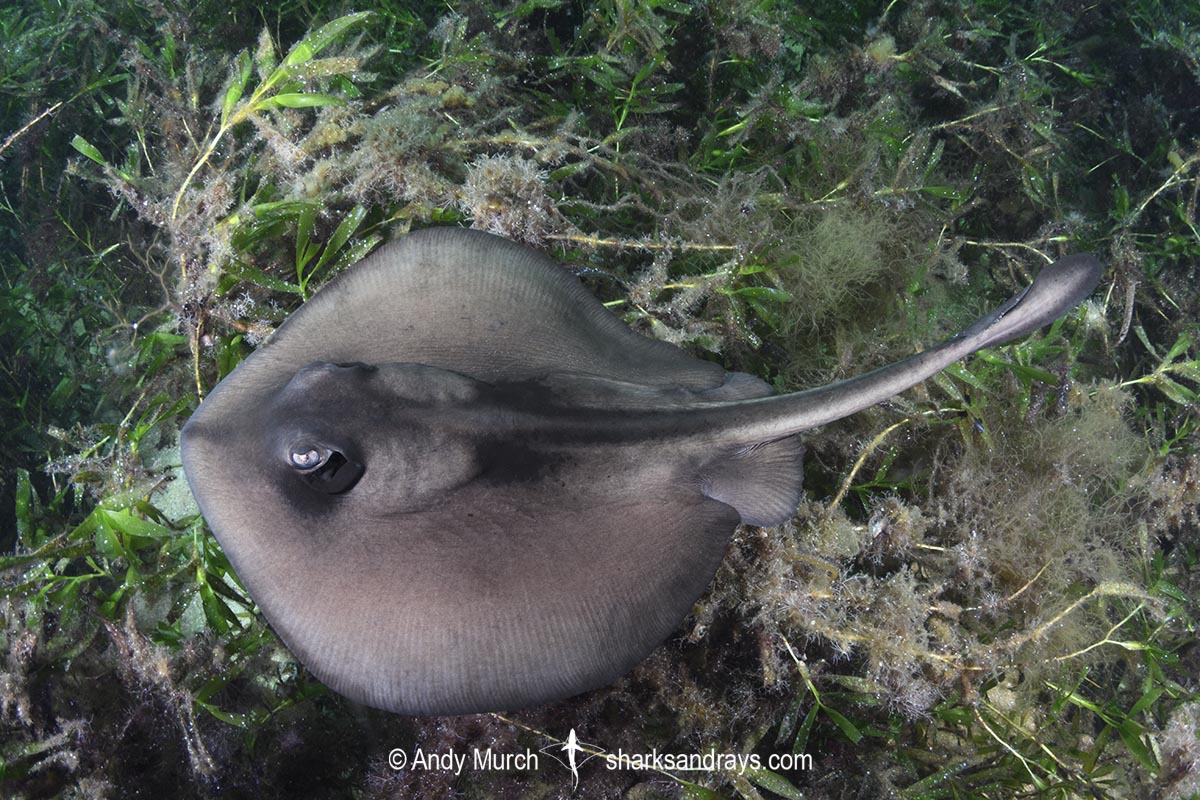
Conservation Status
LEAST CONCERN
The population trend for the striped stingaree is unclear, but it is probably stable due to its preference for rocky terrain and the general minimal fishing effort within its range in southern Australia.

Habitat
Subtropical/temperate seas. Found on hard substrates and sand, usually adjacent to rocky reefs and/or kelp. Shallow bays to 88m.
Distribution
Endemic to Southwestern Australia. Extremely limited range between Eucla in the Southern Ocean, northwestwards to the Abrolhos Islands in the Indian Ocean.
Reproduction
Viviparous, probably with trophodermic nutrition. Litter size unknown.
Diet
Diet unknown.
Behavior
Poorly known. Sometimes conceals itself under seaweed.
Reaction to divers
Approachable with non-threatening movements but will bolt if approached too closely.
Diving logistics
Striped stingarees are fairly common along much of the coastline of southwestern Australia. They are often sighted at popular diving areas such as Albany, Busselton Jetty, and Rottnest Island.
Although they are sometimes found on top of the reef, careful searches of kelp stands (where they are known to conceal themselves) is probably the best strategy.

